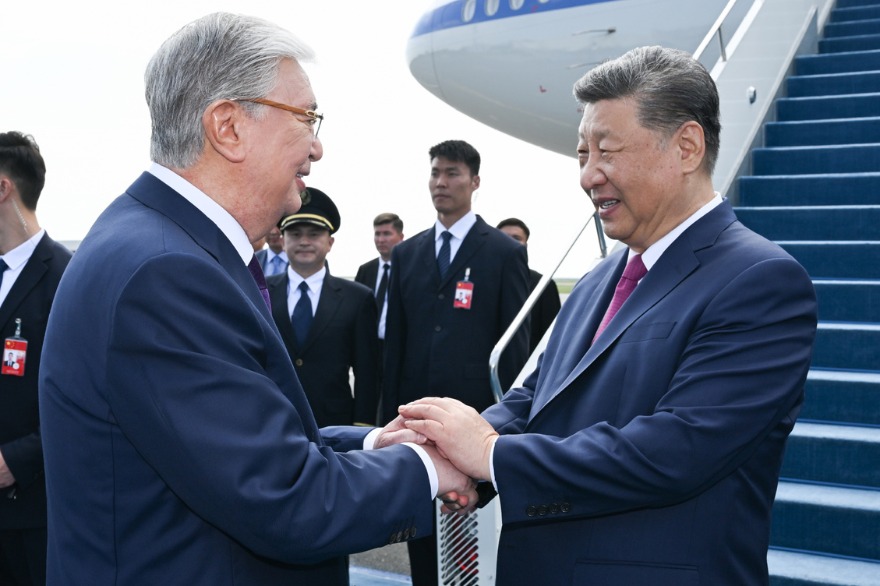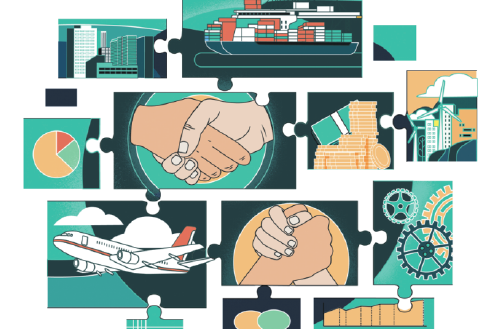Shock absorber
US economy will plunge into recession if a soft landing cannot be achieve

US economy will plunge into recession if a soft landing cannot be achieve

It seems that the United States is enjoying another economic boom. Its unemployment rate is at the lowest level since the 1970s, wages and incomes are rising, and the US dollar index has risen 6.5 percent compared with the beginning of the year. President Joe Biden has even claimed that the US' economic growth rate this year will exceed China's for the first time since 1976.
However, experts have warned the US economy faces the risk of recession. A study by former US treasury secretary Lawrence Summers suggests that throughout the US history, when the inflation rate is higher than 5 percent and employment rate is lower than 4 percent, the possibility of a recession within a year is 100 percent. In the first quarter, the US inflation rate and joblessness rate reached these threshold levels.
The US government and the Federal Reserve believe the US economy can avoid a recession and achieve a soft landing. It is true that reasonable macroeconomic policies, especially fine-tuning of some policies, can help accomplish a soft landing. But it is not easy to realize it. The US only achieved a soft landing once, in the mid-1990s.
There are three obstacles on the path to a soft landing.
First, the high inflation rate. The consumer price index of the US hit over 5 percent in May last year, and it has kept rising since then, reaching the mark of over 8 percent for two consecutive months in March and April. To push down the inflation level to the 2 percent target, the US needs to maintain the aggregate demand at levels significantly lower than the potential output for a long period, which would likely trigger a recession.
Second, this round of inflation includes some cost-push factors which have been driven by the price hikes of commodities caused by the Russia-Ukraine conflict, the pandemic-induced disruptions to global supply chains, as well as the increased tariffs on Chinese products and the subsequent impact on supply chains. To rein in the cost-push inflation requires stronger measures to curtail market demand if costs cannot be lowered, which will accelerate a recession.
Third, low interest rates and a loose monetary environment have brought excess liquidity to the US financial market. When interest rates rise rapidly and monetary policy tightens, the prices of financial assets may tumble, and the turbulence in the financial market will worsen the recession of the real economy.
If the US can effectively bring down the costs from the supply side, there remains a chance of a soft landing. Lower costs can drive inflation rates down steadily at a time when market demand shrinks slowly, thus making it unnecessary to resort to a sharp rise in interest rates and monetary tightening. However, the Biden administration faces many hindrances in lowering the costs.
One effective measure to bring down costs is tax reduction. Regrettably, there is no such option in the Biden administration's policy toolkit. The US government, which has already rolled out massive spending packages for COVID-19 relief, infrastructure building, and assistance to Ukraine, has pledged to make up for the government deficit by increasing tax in the context of growing debt pressure caused by rising interest rates. It is too difficult for the Biden administration to make a U-turn on its tax policy.
Another solution is to bring down the prices of major global commodities. If the US terminates its economic sanctions on Russia and pushes for an end to the Russia-Ukraine conflict, the prices of commodities such as energy and food will drop remarkably. But instead of seeking an end to the conflict, the Biden administration is prolonging it by providing military assistance to Ukraine, and increasing the sanctions on Russia. Obviously, the Biden administration's priorities are political rather than economic.
The US could also ask OPEC members to increase output to rein in the runaway oil prices. However, high oil prices are in the interests of oil exporters. In addition, as the US' influence on OPEC members is declining, countries such as Saudi Arabia lack the willingness to increase adequate production.
There is yet another way for the US to reduce costs. It should secure cost-effective supply chains through international cooperation. But the Biden administration has halted the US cooperation with China in supply chains while seeking to rebuild the supply chains that moved out of the US. The US is even attempting to establish backup supply chains to those it has already established with its allies and partners. All of those measures are driving up costs.
For the Biden administration, maybe the most convenient way to keep down costs is to remove the excess tariffs the previous administration imposed on Chinese goods. As the Biden administration is adjusting the previous government's misguided trade policies, lifting the tariffs, is in line with the incumbent administration's overall trade policy on China and will be beneficial to the US economy. But if the US still tries to use the tariffs as a bargaining chip to gain more advantages for itself and extends the tariffs either in the hope of getting extra benefits from China or under political pressure from home, the US economy will continue to suffer from the high inflation.
In a word, if the US cannot get rid of this strategic burden of tariffs soon enough and seek to bring down costs through international cooperation, the risk of demand contraction will grow and a soft landing will not be achieved. Once interest rates surge, market demand contracts sharply and the financial market is plunged into turbulence, the US economy will inevitably slide into recession.

The author is a senior fellow of the Institute of World Economics and Politics at the Chinese Academy of Social Sciences. The author contributed this article to China Watch, a think tank powered by China Daily. The views do not necessarily reflect those of China Daily.
Contact the editor at editor@chinawatch.cn.


































